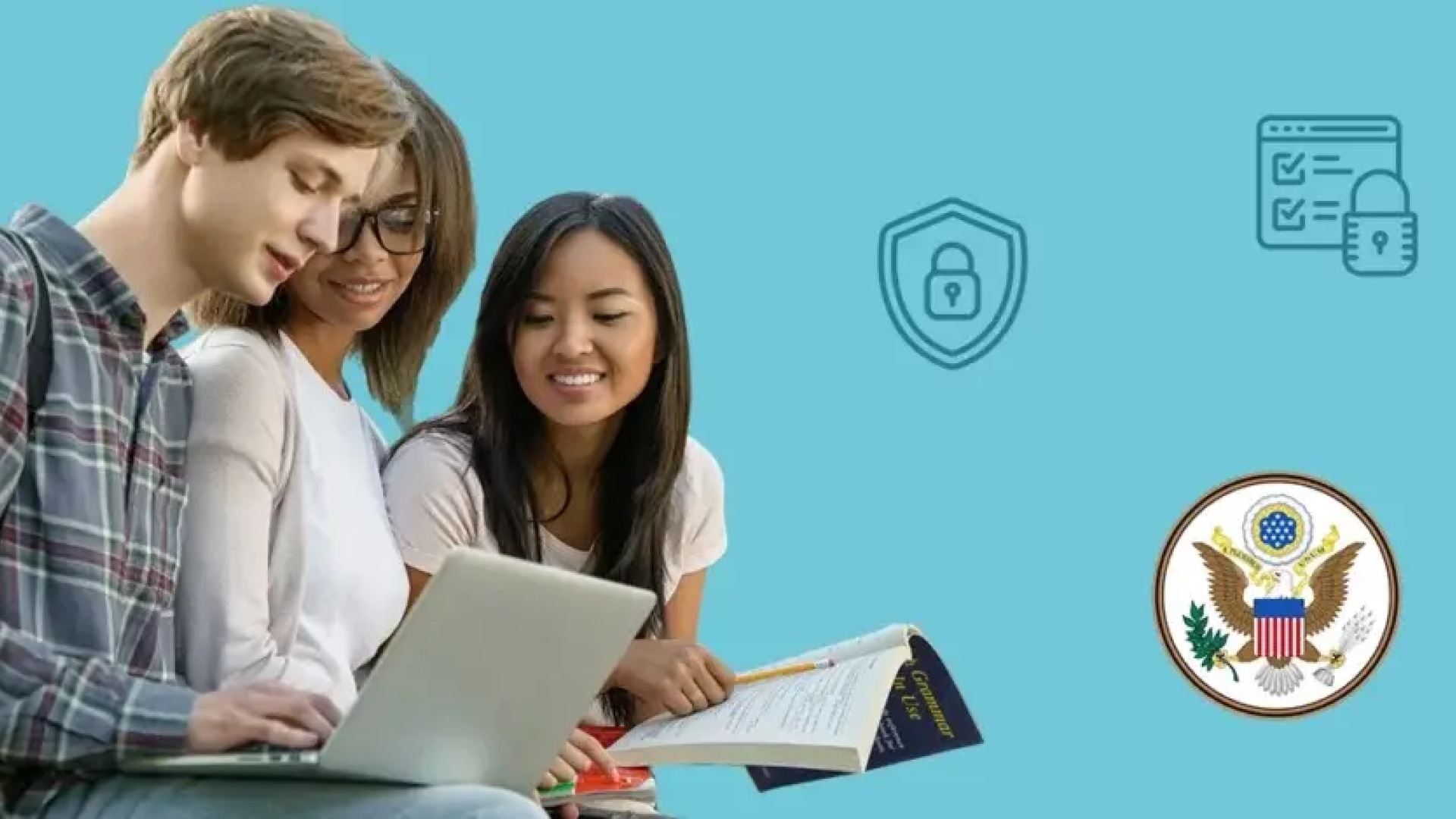The TEACH Act provides guidelines for using copyrighted video content in education. Learn how educational institutions can ensure compliance, protect intellectual property, and manage video content responsibly.
TEACH Act Explained: Compliance for Educational Video Content
by Nohad Ahsan, Last updated: April 4, 2025

Education is going digital, with versatile and engaging video content leading the way in online courses and classroom presentations.
However, there’s a looming problem many educational institutions overlook: compliance with the TEACH Act or Technology, Education, and Copyright Harmonization Act. The stakes are high. If your institution uses video for distance learning or classroom education and you’re not following the TEACH Act, you could face significant legal consequences.
This isn’t just a minor compliance issue. The TEACH Act’s implications stretch into the very core of how educational content, especially videos, is distributed, shared, and managed. The trouble is that many educators, administrators, and tech managers are unsure of what exactly the TEACH Act demands.
Let’s face it. Mismanaging your video content or failing to comply with the TEACH Act could land your institution in hot water, leading to fines, legal scrutiny, and a loss of credibility. That’s a terrifying prospect for educational institutions whose missions revolve around access to learning, not lawsuits.
What is the TEACH Act?
The TEACH Act (Technology, Education, and Copyright Harmonization Act) is a key U.S. law enacted in 2002.
Its primary purpose is to help educational institutions use copyrighted materials, including video content, for educational purposes—particularly in distance learning. The act was introduced as the need for online learning and educational technology grew rapidly.
The TEACH Act allows institutions to use copyrighted content without obtaining explicit permission from copyright holders, provided they follow specific guidelines. These guidelines ensure that educational institutions can deliver quality content to students while respecting the intellectual property of creators.
In this blog, we’ll break down the TEACH Act in simpler terms, discuss its key provisions, and explain why it matters for educational content management.
Key Provisions of the TEACH Act
Understanding the TEACH Act’s provisions is crucial for institutions that use video content for educational purposes. Let’s break it down:
1. Copyrighted Material Usage for Educational Purposes
The TEACH Act allows educational institutions to use copyrighted materials like videos for teaching purposes. However, there are important rules to follow:
-
Relevant to the Course: The content must be directly related to the course curriculum.
-
Limited Access: The video should only be available to students enrolled in the specific course.
This means that only content tied to the curriculum can be shared, and it should remain exclusive to students taking that course.
2. Limitations on Access and Distribution
The TEACH Act sets clear boundaries on how and when copyrighted content can be accessed:
-
Course-Only Access: Videos and other materials must only be accessible to students for the duration of the course.
-
No Distribution Beyond the Class: Institutions must ensure that copyrighted materials are not shared or distributed outside of the class, preventing unauthorized access.
This helps ensure that copyrighted videos are only used for educational purposes and not distributed beyond the class.
3. Digital Platforms and Technology Requirements
The TEACH Act also mandates certain technical measures:
-
Controlled Display: Educational institutions need to use digital platforms that restrict access to copyrighted content. This includes measures like requiring passwords to access videos or limiting the ability to download or print the content.
This ensures that only authorized individuals have access to the materials, and it helps protect the copyright holder’s work from being unlawfully duplicated or shared.
Why the TEACH Act Matters in Video Content Management
Adhering to the TEACH Act isn’t just about following the law—it’s about maintaining the integrity of your educational institution’s content and avoiding legal trouble. Let’s see why it matters.
Ensuring Compliance with Copyright Laws
Non-compliance with the TEACH Act can have serious consequences, including:
-
Copyright Infringement Claims: If your institution violates the TEACH Act, it could face lawsuits from copyright holders.
-
Fines and Legal Battles: Institutions that fail to comply may be fined or required to pay damages.
-
Reputational Damage: Legal issues related to copyright violations can harm an institution’s reputation, making it harder to maintain trust with students, faculty, and content creators.
By understanding and adhering to the TEACH Act, institutions can avoid these costly and time-consuming problems.
Protecting Educational Content and Integrity
The TEACH Act not only protects copyrighted video content but also helps institutions maintain the integrity of their educational materials. Here’s how:
-
Ethical Use of Content: By following the TEACH Act’s provisions, institutions can use content responsibly, respecting the rights of content creators.
-
Preserving Educational Integrity: The Act ensures that content is used ethically within the context of education, not for unauthorized purposes.
This helps educational institutions build trust with students, faculty, and content providers while maintaining the quality and integrity of their educational offerings.
In Summary
The TEACH Act plays an essential role in how educational institutions manage and distribute video content. By complying with the Act’s provisions, institutions can use copyrighted video materials in their courses without running into legal issues.
The TEACH Act also ensures that content is used ethically, protecting both the institution’s reputation and the integrity of the educational content provided to students.
Understanding and complying with the TEACH Act might seem complex, but with the right digital tools and practices in place, educational institutions can ensure compliance while offering valuable learning experiences to students.
For educational institutions looking to streamline video content management and ensure TEACH Act compliance, investing in a secure, reliable video management system is key.
The Complexities Of The Teach Act
Understanding the TEACH Act is like solving a legal puzzle. It was enacted to provide copyright protections for educational institutions that use copyrighted materials for distance education courses.
The Act allows institutions to make certain types of copyrighted materials available to students without obtaining explicit permission from the copyright holder.
It’s not just about playing videos in a classroom anymore. It’s about making sure that every piece of video content your institution uses is compliant with a set of strict rules.
And the rules themselves? Confusing, full of legal jargon, and ever-changing. Here’s where the pain sets in:
Accessibility and Licensing Issues
Are you confident that your video content is fully accessible to students with disabilities? Do you have the proper licenses for every video you use in your online courses?
In addition to the core provisions regarding the use of copyrighted materials, The TEACH Act has very specific accessibility and licensing requirements that, if ignored, could lead to compliance violations.
Technology Integration Struggles
Video platforms in education often come with their own set of technical challenges.
How can you integrate video content management systems in a way that automatically ensures TEACH Act compliance?
Manually checking every video isn’t scalable. You need technology that works for you, not against you.
Ownership and Usage Rights Confusion
One of the most common challenges faced by educational institutions is ensuring that instructors understand the TEACH Act's fair use provisions.
The fair use doctrine allows for limited use of copyrighted material without obtaining explicit permission from the copyright holder.
Do your instructors know which video materials they can legally use under the TEACH Act?
Misunderstanding the fair use provisions under the act can easily result in accidental copyright infringement, which could lead to costly legal battles.
Even if an institution believes that its use of copyrighted material is fair, a copyright holder may disagree and file a lawsuit.
Scaling Compliance Across Multiple Departments
If your institution has multiple departments, each using its own video content, how can you ensure everyone follows the TEACH Act consistently? Centralizing compliance across departments can seem impossible, but failing to do so exposes you to legal risks.
Every education leader knows they can’t afford to ignore these issues, yet the path to compliance feels confusing at best.
A Strategic Approach to TEACH Act Compliance with Video Content
There’s a way out of the maze, and it starts with understanding how to strategically manage your video content in line with the TEACH Act.
Here’s what you need to do:
Centralize Video Content Management for Easier Compliance
First, you need a robust video content management system (VCMS) that centralizes all your video content in one place.
A centralized platform can automatically tag content, categorize videos by accessibility features, and ensure all content follows licensing regulations.
This approach simplifies compliance because you’re no longer trying to manage video files scattered across different departments or platforms.
Ensure Accessibility for All Students
Accessibility isn’t just a good practice. It’s a legal requirement under the TEACH Act as the Act strongly emphasizes accessibility.
Videos must have accurate captions, and all instructional materials should be accessible to students with disabilities.
Here’s how you can meet these demands:
Captions and Transcriptions
Ensure all videos are captioned and provide transcripts for audio content.
Vidizmo’s AI-driven transcription and captioning features automate this process, ensuring that your institution stays compliant without needing a dedicated team to handle accessibility manually.
It is a fundamental principle of inclusive education.
By ensuring that educational materials are accessible to all students, institutions can create a more equitable and inclusive learning environment.
Video Player Customization
Educational institutes should use video players that support various accessibility features, such as keyboard navigation, screen reader compatibility, and color contrast adjustments, to ensure that video content is accessible to students with disabilities.
These features help to accommodate students with visual, hearing, or cognitive impairments.
Understand and Implement Proper Licensing and Fair Use
Under the TEACH Act, educators can use copyrighted video materials in their classes, but strict limits exist.
To avoid copyright violations, ensure you have the right licenses in place, or rely on content covered by fair use.
Automate Compliance Monitoring with AI
Manually checking whether your institution’s video content is TEACH Act compliant isn’t feasible. The good news?
You don’t have to. AI-powered platforms can automatically monitor your content for compliance risks, such as copyright violations or accessibility issues, and alert administrators when action is needed.
This proactive approach allows you to address potential problems before they become legal issues.
Educate Your Faculty and Staff on TEACH Act Requirements
The TEACH Act doesn’t just affect administrators and IT staff. It has significant implications for everyone involved in educational content creation and distribution.
To avoid accidental non-compliance, your institution needs to invest in training programs that educate faculty and staff on the ins and outs of the TEACH Act.
These programs should offer a clear understanding of the TEACH Act's provisions, including the limitations, accessibility requirements, and licensing guidelines.
Leverage video training sessions that explain compliance best practices and use a VCMS to track who has completed the necessary training.
This ensures that everyone is on the same page and that your institution can demonstrate compliance in case of an audit.
Key Takeaways
-
Understanding the TEACH Act: The TEACH Act regulates the use of copyrighted materials, including video content, for distance learning in educational institutions. Institutions must ensure compliance with its provisions regarding licensing, fair use, and accessibility.
-
Centralize Video Content Management: Use a robust Video Content Management System (VCMS) to centralize video content across departments, simplifying compliance and ensuring all videos meet accessibility and licensing requirements.
-
Accessibility is Crucial: Ensure that all video content is accessible to students with disabilities by using platforms that support captioning, transcription, and accessibility features like keyboard navigation and screen reader compatibility.
-
Automate Compliance Monitoring: Utilize AI-powered platforms to automate compliance checks, ensuring your institution’s video content adheres to the TEACH Act without the need for manual oversight.
-
Educate Faculty and Staff: Implement training programs to educate faculty and staff on the TEACH Act’s provisions, including copyright limits and accessibility requirements, to prevent accidental non-compliance.
-
Leverage Technology for TEACH Act Compliance: Integrating technology that automatically tags, categorizes, and monitors video content for compliance with the TEACH Act can save time and reduce the risk of violations.
Take Action: Implement a TEACH Act-compliant video content management system today. Ensure that all educational videos are accessible, properly licensed, and compliant with the law. Explore our solutions to simplify your compliance journey and improve your institution's content management.
Navigating the TEACH Act with Confidence
The TEACH Act provides essential guidelines for educational institutions using video content in distance learning. It’s crucial to ensure that your institution’s video content is compliant with its licensing, accessibility, and fair use provisions.
By centralizing content management, automating compliance, and providing faculty training, you can streamline the process and mitigate the risks of non-compliance.
Adopting the right technology is key to making this process efficient and manageable. A robust video content management system (VCMS) can automatically monitor and ensure compliance with the TEACH Act, freeing up valuable resources while safeguarding your institution from legal risks.
Ensure your educational content meets TEACH Act standards by implementing an effective VCMS today. Contact us to schedule a demo and learn how our platform can help your institution stay compliant and accessible.
People Also Ask
What is the TEACH Act and why is it important in education?
The TEACH Act (Technology, Education, and Copyright Harmonization Act) is a U.S. law that allows educational institutions to use copyrighted content for distance learning without seeking explicit permission from copyright holders. It’s important because it ensures educators can use multimedia content legally while meeting accessibility and fair use requirements.
How can educational institutions comply with the TEACH Act when using video content?
To comply with the TEACH Act, educational institutions must ensure that video content is properly licensed, accessible to all students (e.g., with captions), and used under the fair use provisions. A centralized video content management system (VCMS) can help by automating these processes, ensuring compliance with legal guidelines.
What are the main provisions of the TEACH Act for video content in education?
The main provisions of the TEACH Act include ensuring the video content used in educational settings is licensed or falls under fair use, ensuring accessibility (e.g., captions), and limiting distribution to only the enrolled students in a specific class or course.
How can video content management systems help with TEACH Act compliance?
Video content management systems (VCMS) help with TEACH Act compliance by centralizing video management, automating captioning, and ensuring proper licensing. They also monitor accessibility and content distribution to help institutions remain compliant with the law.
What are the penalties for non-compliance with the TEACH Act in educational institutions?
Penalties for non-compliance with the TEACH Act can include copyright infringement lawsuits, financial fines, and damage to the institution's reputation. It's essential for educational institutions to follow the TEACH Act guidelines to avoid legal and financial repercussions.
Does the TEACH Act apply to all types of video content in education?
The TEACH Act applies primarily to copyrighted video content used for instructional purposes in online and distance learning environments. It doesn't cover all video content, such as publicly available videos or personal recordings that don't fall under copyright protection.
What does fair use mean under the TEACH Act?
Fair use under the TEACH Act allows educational institutions to use portions of copyrighted video content without permission, provided the use is for instructional purposes and meets certain criteria like limiting access to enrolled students and using only a small portion of the video.
What accessibility requirements does the TEACH Act impose on educational video content?
The TEACH Act requires that educational video content be accessible to students with disabilities. This includes adding captions to videos and ensuring that video players support features like screen readers and keyboard navigation to accommodate students with visual, hearing, or cognitive impairments.
How can instructors ensure that they are using video content in compliance with the TEACH Act?
Instructors can ensure compliance by using licensed content, adhering to fair use guidelines, ensuring accessibility (e.g., captions), and limiting video access to enrolled students. Institutions should offer training to faculty on these requirements to avoid accidental violations.
Can a video content management system automate TEACH Act compliance?
Yes, a video content management system (VCMS) can automate many aspects of TEACH Act compliance, including adding captions, monitoring fair use, ensuring licensing, and managing access controls to ensure that content is only available to authorized students in specific courses.
Jump to
You May Also Like
These Related Stories

Choosing Between Cloud and On Premise Video Platforms For Your Organization

How a Video Knowledge Management Platform Helps HR Capture Onboarding and Policy Knowledge




No Comments Yet
Let us know what you think